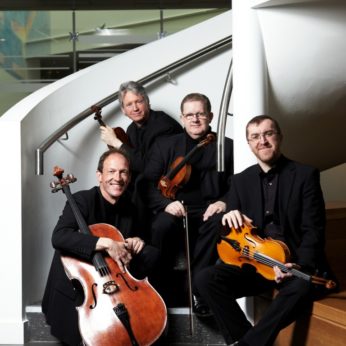Fauré offered a homage to Beauty in which there was not only faith, but a discreet yet irresistible passion. Georges Auric
Fauré is widely regarded as the greatest master of French song, but after the songs, his chamber works make up his most important contribution to music. He enriched all the genres that he attempted, violin and cello sonatas, piano trio and piano quartet, string quartet and piano quintet. Public recognition came late and for nearly all his life he was obliged to work as an organist, choirmaster and teacher, so that he only had the summer holidays for composition. Like Liszt and Chopin he was well-known in the society salons, which were then the stronghold of the avant-garde. In 1905 he became director of the Paris Conservatoire, where he initiated a series of important reforms. So resolute was he at this that he earned the nickname Robespierre. This made him well known but gave him even less time to compose. He finally retired in 1920 because of his growing deafness, where the weakening of his hearing was compounded by a systematic distortion – high sounds were heard a 3rd lower and low sounds a 3rd higher. So finally, aged 75, with damaged hearing he was free to compose all year round and produced a series of works that crowned his career.
Fauré’s instrumental writing is notably different from other composers for whom the piano has played a central role. Instead of pitting the soloist against the strings, doubled in opposition, he seeks to unify the strings and keyboard textures into a seamless, flowing language. So a listener hoping for melodrama will be disappointed but close attention will be rewarded by the harmonic richness and canonic skill of the writing. The first movement has been extravagantly praised and justifiably so: it was with delighted surprise that people found such vigorous and youthful music in a veteran composer. It is one of his finest melodic inspirations, and the movement gives the impression of a single unbroken curve of lyricism, though its form is a complex system of continuous development. The theme itself is subtle and rhythmically ambiguous, admirably suited to the composer’s plan of integrating strings and piano into a unified texture.
The Scherzo is in the quicksilver Mendelssohnian tradition, but hardly in the same idiom. The lightness of foot is occasionally tempered by some astringent string writing, but the mischievous good humour is never relaxed. The long Andante in G major has an air of muted resignation, flowing almost unchecked as if played on one deep breath. The strength of will is there also, holding the melody in place. But the quality is undeniably autumnal. The last movement is also unsensational though not without high spirits. As in the first movement the theme begins in the viola before being taken up by the remaining strings. The writing remains spare except in the closing bars when a richness of texture reminiscent of his piano quartets is conjured up to remind us of times past.
